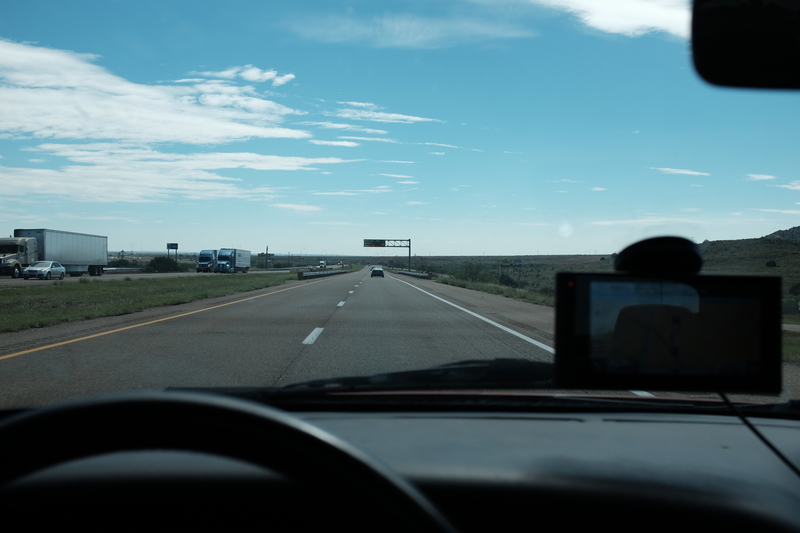Go East
6 August 2017
According to Wikipedia, the United States drives on the right (with the exception of American Samoa and the Virgin Islands, for some reason). And while there is definitely evidence to support this suggestion, such as left-hand drive cars, people keeping to the right side of the central divider and so on, it seems like Americans forget this as soon as you present them with more than one lane in the same direction.
It is not like in the UK, where on most roads, you drive on the left, except on the motorways, where you drive on the right. In the United States, you drive... randomly. As a consequence, if there are two lanes on the motorway, the left lane is considered the average lane, while the right lane is the alternating slowest and fastest lane. If you wish to actually head towards your destination at a reasonable speed, you are forced to overtake on the right between lorries, because the slower moving personal traffic will not switch lanes after overtaking lorries.
This experience is so common, that people who have just overtaken a lorry, hesitate to switch lane - even if they want to - in fear that the car behind them will make a fast move to overtake on their right, rather than - as it would be proper - wait until the slower moving car has switched lane into the slower lane.
This level of uncertainty creates a simple solution that most American motorists follow: Just stay in one lane. It is easier and less consequential, even though overtaking on the right is far more dangerous than overtaking on the left in a country where they supposedly drive on the right. This becomes even more notorious with three lanes, where the slower traffic stays in the centre lane, while the average or fastest traffic moves in the rightmost lane and the generally fast traffic moves in the leftmost lane. This ridiculousness even applies to lorries, which will often stay in the centre lane, forcing motorists to overtake lorries on the right.
It is easy to blame American motorists, and their education in driving obviously deserves blame here. But it is also American traffic engineers. They have forgotten a golden rule for building motorways: When you expand the amount of lanes on a motorway, it is always a new fast lane that appear. Often, in the US, it will be the right lane that expands, and as such when going from two lanes to three lanes, the traffic remains in the two leftmost lanes.

Driving from Grand Canyon in Arizona to Amarillo in Texas, there are numerous signs like this, highlighting the classic Route 66. I may a point of not driving on it.
This is not just a sense you experience, as you head east through the Southern United States, this is common everywhere in North America, including Canada. And while I would previously have focused more on driving along country roads, my trip back to the east coast was intended as a quick run, and as a result, it became mostly motorways.
I had the fortune to meet a fellow Citroënist in Dallas, who had a BX, a rare sight indeed in the US. Although, you can imagine that my Xantia would be even rarer. As true to the spirit of Texas, we ate at very good local barbecue place, that formed a sense for me of more traditional Texan cuisine, rather than the commercialised versions, that one would be used to.
It is not often you have the fortune to experience barbecue this good, along with a strange contraption called a 'special Texas twinkie'. A twinkie is an American snack and quite sweet. The Texas version is not. It is a stuffed jalapeño wrapped in bacon, that actually tasted quite excellent.
The last stretch of my run eastward ended in Florida, where it is constantly hot and humid. Indeed, so far, I have not been in a single place in North America, where it was comfortable outside. Makes one wonder, why people even live here.

